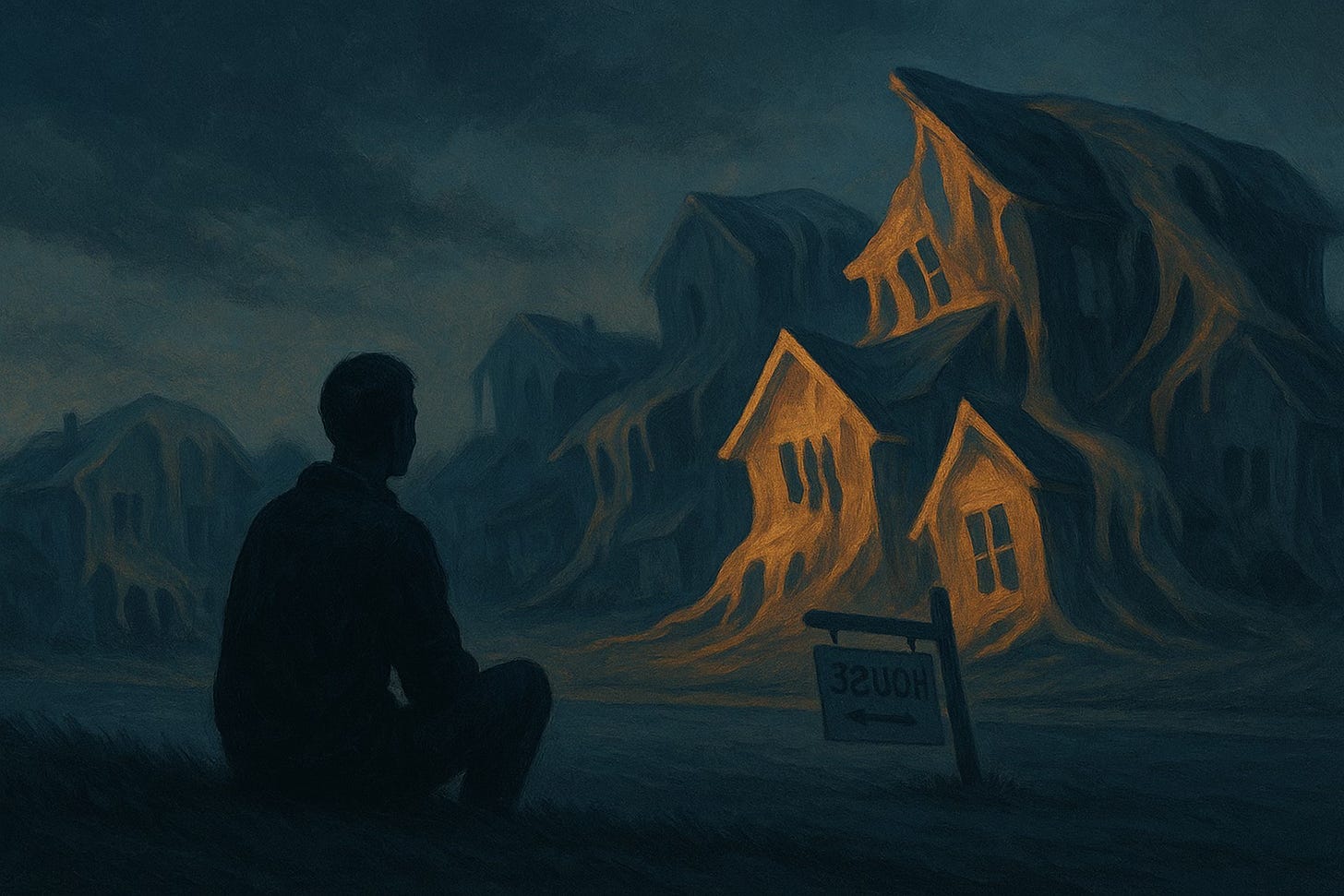The American Dream Is on Pause
Homeownership is now a financial liability
Record prices. Collapsing sales. Fifteen percent of deals falling apart at closing. Welcome to the American housing market in 2025, where the math stopped working three years ago but prices keep climbing anyway.
June’s numbers tell the story: existing home sales dropped 2.7% from May while the median price hit $435,300 - another record high for the month. The Northeast saw sales plummet 8%. Yet prices just keep grinding higher, marking 24 consecutive months of year-over-year gains.
But then again, nothing about this market makes sense. You’ve got tech workers pulling down $200,000 who’ve done the math and decided renting beats owning. One Los Angeles resident laid it out perfectly – as a renter, they’re financially secure with money for travel and retirement savings. As a homeowner? They’d be living “precariously at the bleeding edge” of affordability, dumping everything into interest, taxes, insurance, and maintenance on a depreciating stucco box in some depressing suburb.
The numbers back them up. That 1992 starter home that cost $92,000? Today it would require a $300,000 salary to afford the same debt-to-income ratio. And that was with a 7.69% mortgage rate – practically identical to today’s 6.75%.
Here’s what the cheerleaders at NAR won’t tell you: inventory is up 16% year-over-year, homes are taking 27 days to sell instead of 22, and sellers are choosing to delist rather than cut prices. Translation? The market has frozen solid.
The doom loop works like this: existing homeowners clutch their sub-4% mortgages like life preservers. They can’t sell without doubling or tripling their monthly payments. So inventory stays tight. Prices stay high. Buyers can’t afford to buy. Sales collapse. Rinse and repeat.
The experts keep talking about a “shift toward buyers” because homes are sitting longer and inventory is creeping up. Yet Redfin’s chief economist admits this “doesn’t exactly feel like buyers are really in the driver’s seat.” You think?
Meanwhile, new construction remains anemic – down 1% year-to-date. Population growth continues to outpace building. And mortgage rates? Veros forecasts they’ll drop all the way to… 6.5% by June 2026.
Perhaps the most telling comment comes from a FAANG employee making “well into the mid-six-figures” who won’t buy because they’re terrified of being randomly laid off. When your highest earners are too spooked to commit to a mortgage, what does that say about everyone else?
Nearly one-third of the largest 100 markets are now seeing annual price declines. Home price growth slowed to 1.3% in June from 1.6% in May. The cracks are showing.
But here’s the thing about frozen markets – they can stay frozen longer than you’d think. Japan’s real estate bubble peaked in 1991. Prices didn’t bottom until 2009. That’s 18 years of grinding deflation while everyone waited for the market to “normalize.”
Not saying that’s where we’re headed. But when multiple generations do the math and conclude homeownership doesn’t pencil out, when your best buyers are sitting on the sidelines, when 15% of deals are collapsing at closing…
Maybe it’s time to question what “normal” even means anymore.


